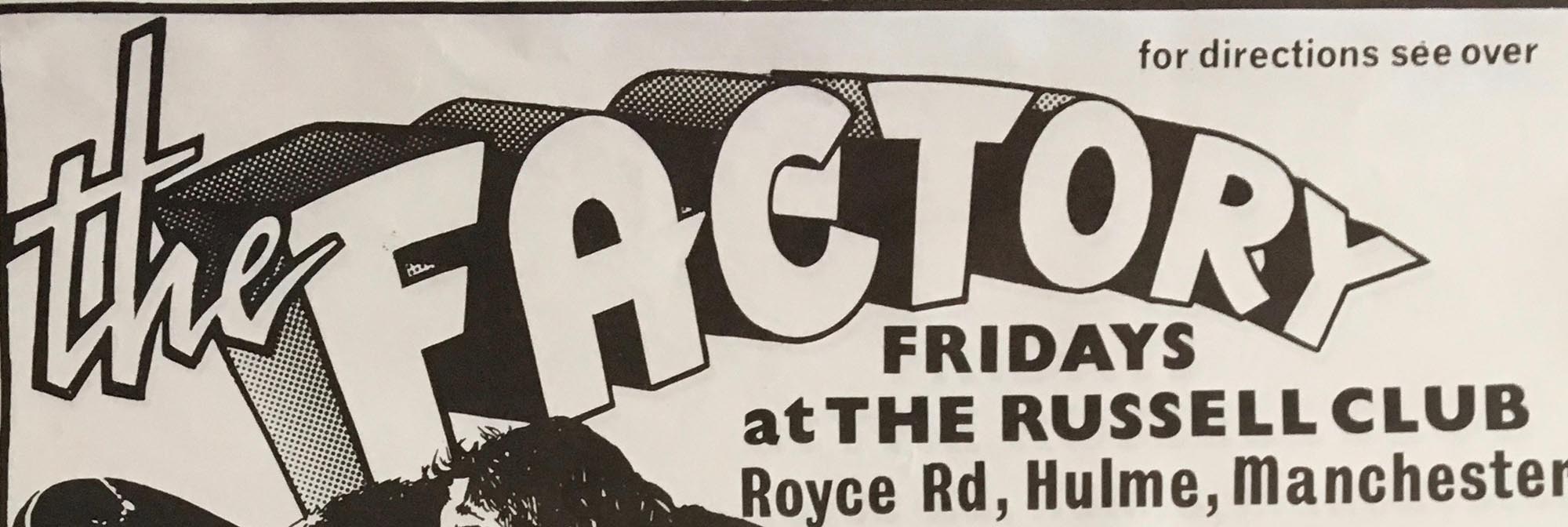Opening this September at Chelsea Space, Use Hearing Protection: FAC 1 – 50 / 40 celebrates the ground-breaking early works and on-going influence of Factory Records, marking the iconic Manchester label’s 40th anniversary.
The exhibition will tell the story of Factory’s formative years from 1978 to 1982 through the first 50 numbered Factory artefacts, including works by Peter Saville, Joy Division, New Order, A Certain Ratio, Durutti Column and Linder Sterling.
Supported by rare and unseen materials from personal Factory archives, as well as non-Factory period items of influence, these combine to describe an era and atmosphere from which Factory was proposed and realised, underpinning its revolutionary cultural impact on the music, art, design and ideas of our times.
Here, Chelsea Space interviews the exhibition’s curators Jon Savage, an author, film-maker, archivist, curator and designer of one FAC number, and Mat Bancroft, an independent curator and archivist, specialising in late 20th century pop culture, about how they tracked down so many rare artefacts together for the exhibition and the influence that Factory Records had on their own lives and careers.
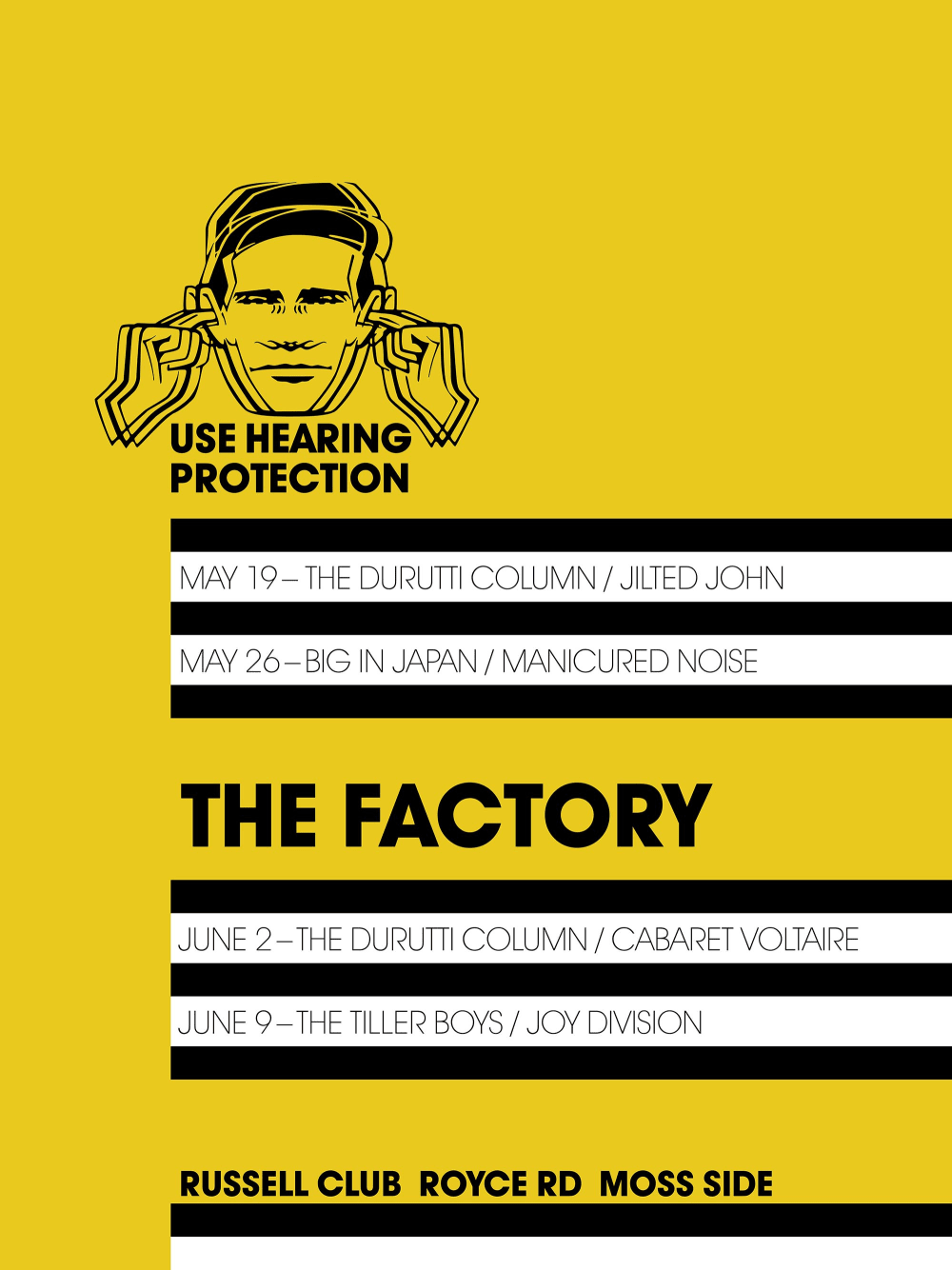
, Chelsea College of Arts, UAL | Photograph: Designer: Jon Savage
Jon, for people that may not know what Factory is, when and how did it start and what is its legacy?
JON: Factory started in early 1978 when Tony Wilson hooked up with Alan Erasmus to start a club night in Manchester. Wilson’s Granada TV pop series So It Goes had been cancelled and he was looking to keep his involvement in music. It was hard for punk groups to play in Manchester due to lack of venues, prejudice etc. and so a club was vital. They found the PSV (Public Service Vehicles) club in Hulme and called it the Factory. The name was nothing to do with the Warhol Factory but came from Erasmus, who saw a sign that said ‘Factory closing’ and said, “well why don’t we have Factory opening?”
The club quickly took off. Peter Saville produced his first poster for Factory in June 1978 and several others followed. The first Factory record release – FAC 2 - was released at the end of January 1979 and soon after then the label’s first album, Joy Division’s Unknown Pleasures, in June 1979. That was the result of a decision by Rob Gretton, Joy Division’s manager, to stay with Factory and not go to London and sign with a major label. Gretton was very committed to the idea and the practice of independent labels.
The legacy would be:
1) the music
2) the impact on the City of Manchester
3) the idea of independence
4) the graphic style and branding of Peter Saville
How were you personally involved with Factory?
JON: Tony Wilson helped me to get a job with Granada Television so that I would be in Manchester to write about his groups, in particular Joy Division. At the time I was a leading journalist on Melody Maker with good access to lead reviews etc. I quickly met Rob Gretton and Martin Hannett who became my friends. Tony knew I’d done a montage magazine with Linder Sterling, called the Secret Public, or New Hormones and he got me to do a few posters for Factory concerts - including two for Joy Division.
What was the relationship like between designers, artists and musicians that you worked with?
JON: It was all very loose. Tony Wilson was the sun around which all the planets and satellites orbited. He was the catalyst and the impresario to the extent that if you had a talent, he would give you a chance to exercise it - whether it was doing artwork, writing a script, or playing music.
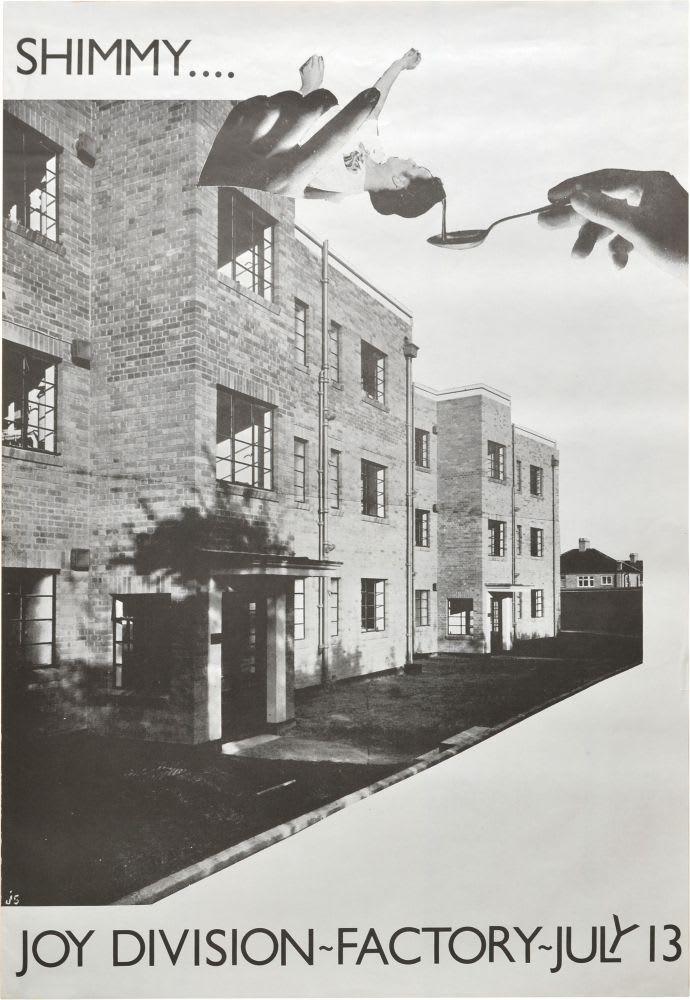
, Chelsea College of Arts, UAL | Photograph: Designer: Jon Savage
Mat, how did your interest in Factory come about?
MAT: I moved to Manchester from Nottingham in late 1998, by which time Factory as an active force was finished, but you could still very much see and experience its legacy across the city. Dry (FAC 201) was still open, the second Factory offices on Charles Street (FAC 251) was a nightclub called Paradise Factory. The Haçienda was closed but still there and you’d see people involved in the label when out and about. It was all strangely inspiring and so I felt weirdly connected to a world, which at the time I admittedly didn’t know that much about. I knew the music of New Order and Joy Division and knew some further musical elements also. I guess the key was studying Design and Art Direction at Manchester Metropolitan University. The work of Peter Saville was an obvious influence and something to be taken very seriously, and through his work I discovered more about Factory.
I also had Linder Sterling as one of my tutors on the course, so I had access to all of these layers that plugged me into the pop culture of the city - and as a pop culture obsessive it was heaven. I think then through being a resident in the city you can see and feel the influence of Factory across Manchester, of course the influence is wider but it is very direct on the city itself.
The city regeneration was kickstarted by Factory, it created an energy that others picked up on and then developed, city living, the re-use of buildings, using local industries and seeing pop culture as an important force for good and for change. Of course, there are precursers, other events and important factors in how Manchester has become the city it is but Factory has had the most singular influence and the strongest legacy, and I feel the longer you live in Manchester the more that becomes obvious.
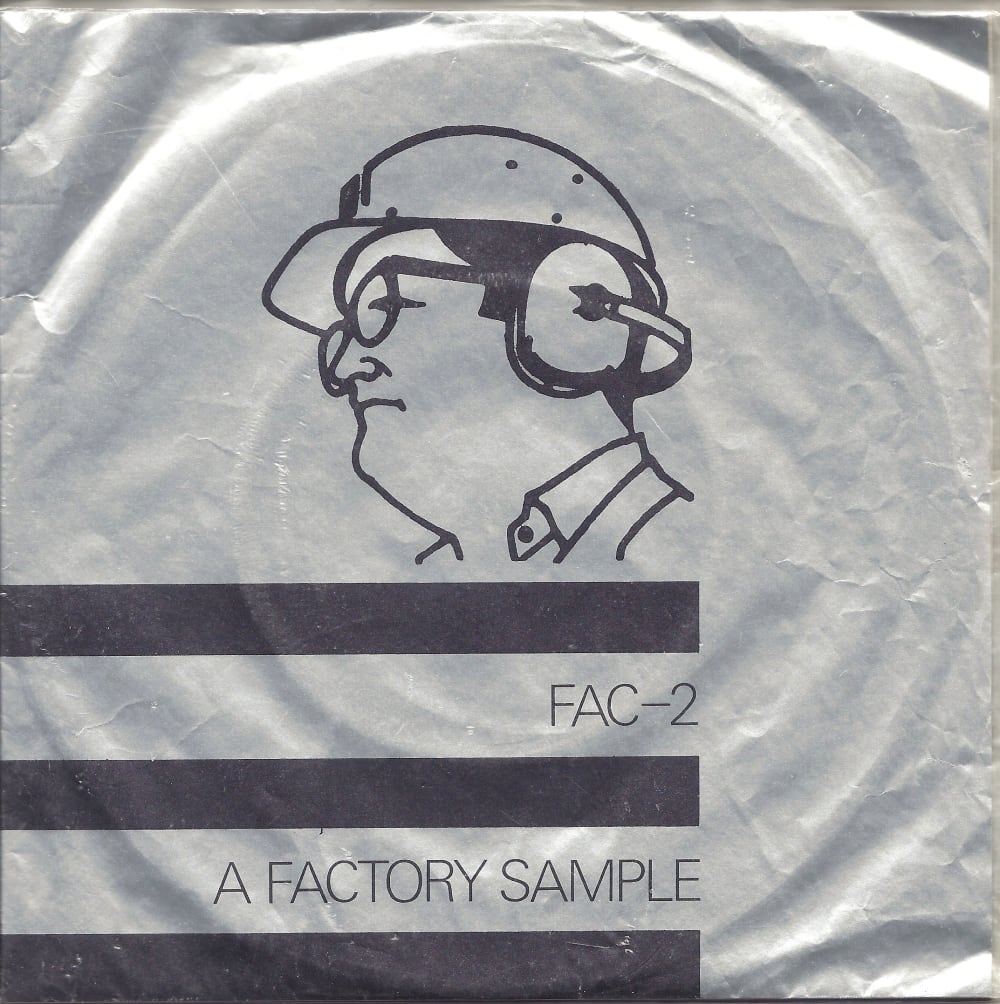
, Chelsea College of Arts, UAL | Photograph: FAC 2, A Factory Sample.Design: Peter Saville
What has been your curatorial process of putting the exhibition together? Have there been any challenges or surprises?
MAT: To some extent it was a case of ‘doing the obvious’, the Factory cataloguing system creates a natural journey for you from 1-50 so it made sense to use this as a route through. We also wanted to provide a small lead up to the story, and we’ve been lucky enough to loan some great pre-Factory items that give this context and show strands of influence. We also chose 50 as the end point because in some ways it marks both an end and a beginning. It is the end of ‘Phase 1’ of Factory, Movement is the debut New Order album, but the ghosts of Joy Division are still most definitely audible, equally Peter Saville’s album cover marks a shift in tone away from the earlier Factory aesthetic.
The next ‘event’ in the cataloguing system is FAC 51 which is The Haçienda and so it marks the turning point between the two Factory clubs: the early years of the Russel Club and the new world of The Haçienda. This early period is incredibly diverse and really very impressive. The range and variety is noticeable in musical style but also in the variety of artefacts allocated a FAC number: records, posters, artworks, films, badges and more. It is a bunch of people all really learning how to do what they are doing, yet the standard of the work, the level of intelligence and the belief in the method and vision really sets a very high bar from the off. Much of the music is genuinely great, the aesthetic that Peter Saville sets up straight from the first poster (FAC 1) is so strong, and of course it isn’t just about records, there are art projects, films, posters, badges and things that never happen. There is mystery and intrigue and trying to uncover the background stories to these items and bring out some new information - which we have - has been a real thrill. There should be items in this exhibition that even those well versed in the Factory story will not have seen before in the flesh.
Naturally the hardest element was to acquire all of the major items for the show. In some cases they don’t exist but we have found background elements or contextual info that tell a story of that particular FAC number. Reportedly one of the posters in the show was only printed in a run of 7 before the event was cancelled, so to include one of those is great.

, Chelsea College of Arts, UAL | Photograph: Designer unknown
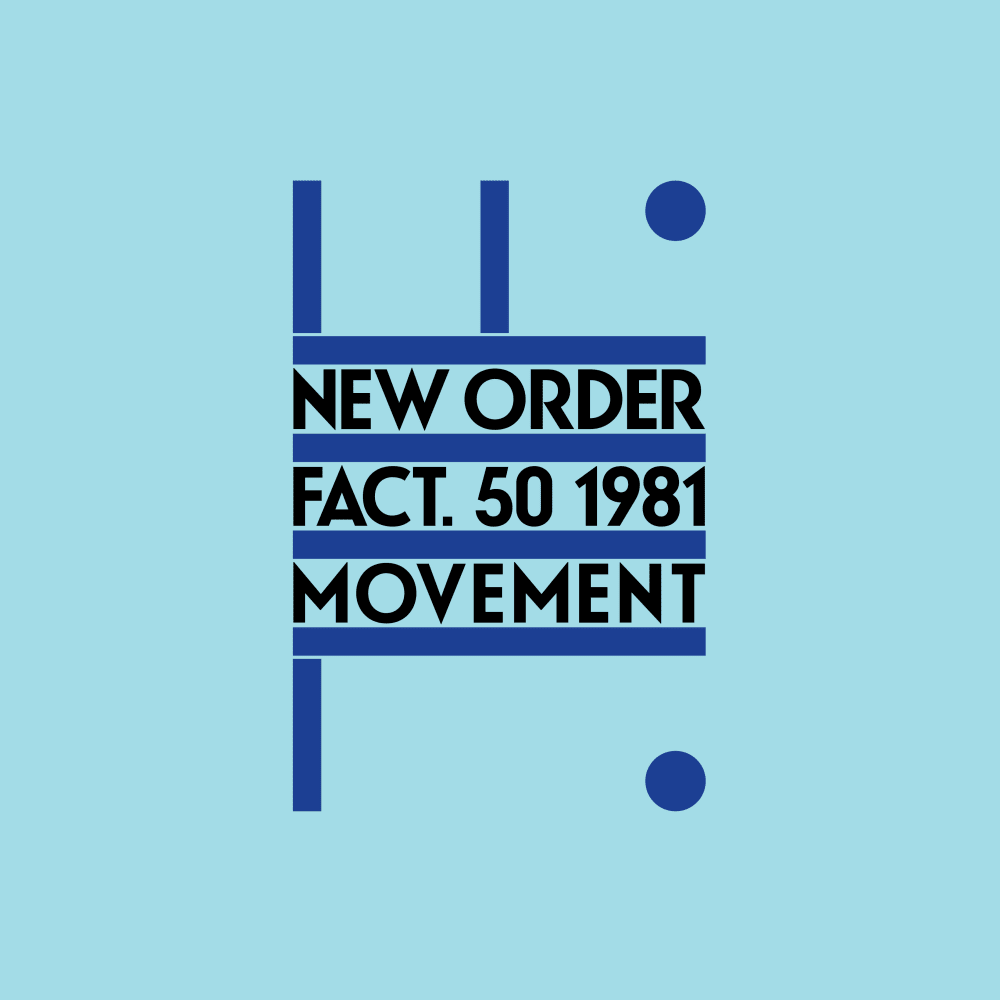
, Chelsea College of Arts, UAL | Photograph: Design: Peter Saville / Grafica Industria
How important is the use of archive material in your exhibition?
MAT: It’s very important for a few reasons. It helps support the main display items, shows influence and background for both those who are coming to Factory for the first time and people who are fans or experts already. It also tells a couple of parallel stories, notably of Tony Wilson and Rob Gretton. We have been granted such generous access to archives by the families of Tony and Rob that we have been able to show a different side to their involvement in Factory. In Tony Wilson’s case, the inclusion of rarely seen flyers and newsletters for the early Factory club and label that he designed will show an artistic, creative story. For Rob Gretton his vision for Joy Division is in essence the same vision at Factory, one where the art comes first.
His notebooks and elements from his scrapbooks show an incredibly intelligent and intuitive thinker. A final, and to some extent unintended consequence of using these archival items, particularly the flyers designed by Tony Wilson, is that it really brings into focus how radical and important Peter Saville’s designs are. Tony Wilson’s designs are vibrant and fascinating, but are very much in keeping with the prevailing period of punk / situationist collage and montage. The aesthetic that Peter Saville introduces across all the areas he worked on elevated Factory above the general independent music scene and gave it a longevity and level of influence that still absolutely resonates today.
Why the exhibition now?
MAT: 2019 is the 40th anniversary of Factory Records, and Jon, I and others felt it was important to mark this.
The early period of Factory is one that hasn’t been investigated in quite this way before, so we were keen to focus on these formative years, acknowledging the importance and lasting influence.
For those new to the Factory story it’s a good place to start.
Use Hearing Protection: FAC 1 – 50 / 40 runs at Chelsea Space from 13 September – 26 October 2019 and is part of the London Design Festival.
